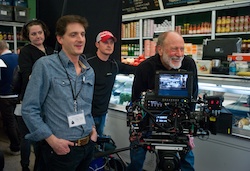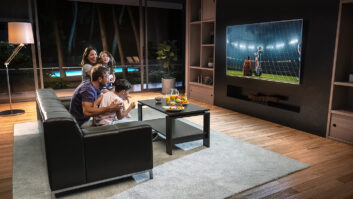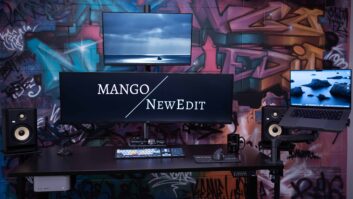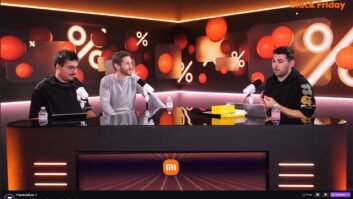
Extremely Loud & Incredibly Close, director Stephen Daldry’s film slated for a limited release on Christmas day, with a wide release January 20th, was the first major studio production to shoot with the Arri Alexa camera in a Codex/Arriraw workflow, writes David Fox.
The Warner Bros. Pictures’ production was also the first digitally captured film for veteran cinematographer Chris Menges (pictured on right in photo).
This new workflow provided a number of distinct benefits. The uncompressed Arriraw data output resulted in the best possible image quality and maximum flexibility for post production.
The solid-state Codex data packs used to capture the raw camera data provided solid reliability and a way to jump-start the process of preparing dailies, back-up media and post production deliverables. The Codex technology also collected complex metadata, including camera settings, notes from the director and DP, and other vital production information, making it instantly accessible to downstream members of the production and post-production team.
1st AC Gregor Tavenner, who previously worked with Alexa and Codex technology on Martin Scorsese’s Hugo, described the Codex/Arriraw workflow as both a boon to production efficiency and easy to integrate with traditional production practices. “Once you are familiar with the Codex system, it is very easy to use,” he said. “It is ergonomically designed and robustly built. For the war film World War Z, we carried nine Codex Onboard units across the ocean with great success.”
On Extremely Loud & Incredibly Close, the dailies workflow was simple and straightforward. When Codex data packs were removed from the Alexa, a technician reconciled the metadata with the camera reports and recorded backup copies to an on-set RAID. The data packs were then sent to Deluxe for dailies and deliverables processing. Deluxe also made LTO backups. The data packs were then returned to the set for reuse.
According to Tavenner, the emergence of raw camera media holds enormous creative promise for film productions, but requires the support of a proven workflow. “None of the new raw technology is useful without the support behind it. We have had great service throughout the introduction of Arriraw, and we look forward to its further development. I am particularly excited about the possibility of 60 FPS Arriraw, which in my mind is quite a useful option that we’ve had with film cameras since the Nineties.”







